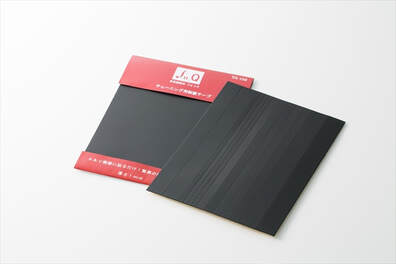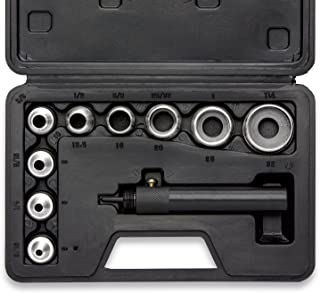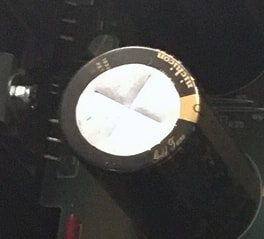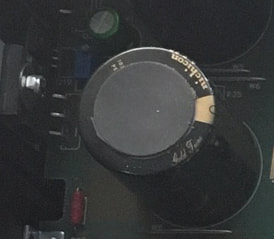|
Mishaps can end up providing unexpected opportunity. Last week I managed to blow a fuse in my amplifier. Since the fuse is in line in the interior of the amp, I had to open it up. When I glanced inside I noticed just how many electrolytic capacitors were staring me in the face with their circles of shiny metal exposed on top. The thought crossed my mind, “What would happen if I put a circle of fo.Q TA-102 on each one?” Looking more closely, I counted eight large, four medium and two smaller caps. There were more that were smaller even. I decided to treat just the 14 larger ones. I have a set of circular punches that I bought on Amazon for about $22. I used them to punch out three different sizes of circles of TA-102 and stuck them on the top of each one.  As I have stated in previous newsletters, each new improvement builds upon the contributions of those that went before. However, a system has got to be at some significant level of resolution for you to begin to realize the enormity of what would otherwise be seemingly small changes. In the past I have written about the ‘myth of diminishing returns’ (my term), as it is quite clear to me (reinforced by these latest changes) that as the level of resolution improves, each new upgrade can leverage more and more improvement than the previous ones. To put it another way, it is both cumulative and multiplicative. So what were some of the changes that I noticed as a result of adding the TA-102 circles to the amplifier? This is a little difficult to describe but I’ll try: I think quite often when we talk about detail in reproduced music we are focusing somewhat on transients leading edges and such, which are of course of supreme importance, but there is also the continuous internal vibration that is the essential character of the instrument itself. The more apparent this internal vibration is, the more the instrument sounds like itself. This is from my original listening notes: "I can’t think of another upgrade that has made such a blazing step forward. Snap, punch, focus on the original inner vibration of each instrument... swing and pace... utter clarity. Just nuts"That was yesterday. Today I decided to do the same procedure on the accessible electrolytics in my AirTight preamplifier. Five of them were axial so it wasn’t possible to put a circle on top, and as they were on their sides I simply put a strip of TA-102 lengthwise on each one. There were also two large standing caps with their tops exposed. I put circles on these.
Again, everything I said preceeding my description of the upgrade on the amplifier applies to this newer upgrade. Upgrades at this level are not just multipliers. They can even have an exponential effect, and that is exactly what happened from the treatment to the preamp. Now it feels like each individual sound, each individual instrument has had its own personal polishing. Whether large or small, it falls into place like a drop of water into a calm lake. It has the lightness and playfulness of stones skipping across that lake. It just caresses your ears. So If I told you I had upgraded from the $8,000 preamp to the $25,000 model you would have believed me, not knowing that the upgrade was just a few dollars worth of material. This latest change has made me think that even when we are deeply grooving to the sound of a system, there still can be an unconscious tension inherent in the process - perhaps our brain is trying to fill in some subtle bits that it computes to be missing - a process operating in the background that is soaking up bandwidth that you are unaware of until something like this happens to shake your world. In this case it is a kind of bloom, a kind of fullness to the most delicate sounds that is new to me. This in turn has allowed me to completely let go and just bathe in sound. Remember when people pealed the plastic covers off of electrolytic capacitors? Some very esoteric builders still do. The rationale is either that there is a vibrational interaction between the cover and the body of the cap, or there is some kind of triboelectric interaction or both. What this tells you is that in their natural state, electrolytic capacitors are contributing by the very nature of their construction to the veiling of the sound. We can deduce from the success of using TA-102 that that contribution is at least, in a significant part, vibrational in nature. I would encourage any manufacturer who uses electrolytic capacitors in their construction to explore the use of fo.Q TA-102 and TA-32 damping material on each and every one, and every hobbyist to uncover their components and apply this essential material. There is no downside to this, only phenomenal improvements to be had for a few dollars. This is something that anyone can afford to try. TA-102 $95 TA-32. $85 Each package consist of two sheets approximately 6" x 8”. Both sheets have adhesive backing. One sheet is scored into strips and the other is left solid. Next up: The Phono Stage - To be continued... If you like what you read here, please sign up for our newsletter below and share this page with your friends. Thank you.
3 Comments
5/20/2023 05:12:07 am
I like reading your blog very informative and well-written.
Reply
11/6/2023 03:20:46 am
Nice! This is a powerful story for me. Thanks a lot for sharing with us!
Reply
7/9/2024 01:09:05 am
I'm a continuous reader of this blog. Really great post that you have shared.
Reply
Leave a Reply. |
AuthorJoe Cohen Archives
August 2023
Categories |



 RSS Feed
RSS Feed
